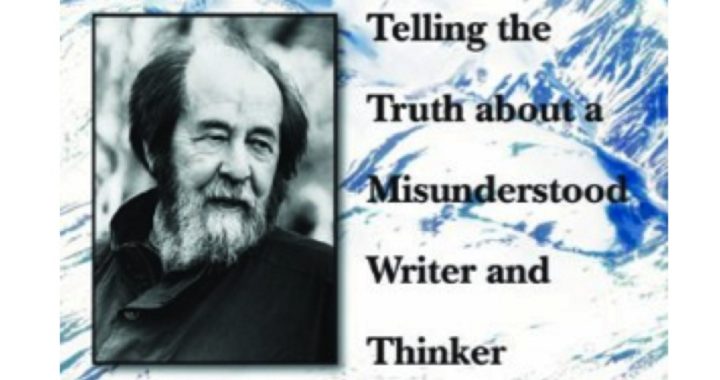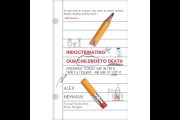
In the history of struggle against totalitarianism in the 20th century, there are few individuals who can come close to rivaling the significance of Alexandr Solzhenitsyn, and the ongoing resistance to such totalitarian evil in the new century is well-served by a continued careful study of his writings. Daniel Mahoney’s latest book, The Other Solzhenitsyn, is a work that is of tremendous service to the West, providing a careful study of Russia’s greatest writer of the Soviet era.
General public interest in Solzhenitsyn’s writings has waned in recent years — the (incorrect) perception that the communist threat had somehow disappeared after the demolition of the Berlin Wall and the typical diminution in readership that takes place in the years immediately following the death of an author have no doubt greatly diminished the influence of Solzhenitsyn’s thought on the rising generation. However, given the current course of events in Russia, Solzhenitsyn’s writings are as important now as they have ever been before.
With the planned transition from Vladimir Putin’s Eurasian Customs Union to the new Eurasian Union set to take place in a little more than a month from now, advocates of the Eurasianist ideology are seeking to justify aggression abroad and authoritarianism within the borders of the union, and some writers have even attempted to posthumously enlist Alexandr Solzhenitsyn into their ranks. As noted previously for The New American, the Eurasian Union is essentially an attempt to reconstruct the Soviet Union. Therefore, attempts to cast Solzhenitsyn as a defender of Russian authoritarianism are in need of refutation.
The Other Solzhenitsyn is a work that is of use to both long-time students of Solzhenitsyn’s writings and those who are encountering him for the first time. Mahoney served as one of the editors for The Solzhenitsyn Reader (published by the Intercollegiate Studies Institute in 2005), and his most recent book readily serves as a companion to that collection.
Mahoney has little patience for those writers who have so misunderstood Solzhenitsyn’s writings as to cast him as an enemy of the West and a defender of Eurasianism. In point of fact, Mahoney documents occasions where Solzhenitsyn defended a Russian appropriation of Western insights into the nature of freedom:
In Solzhenitsyn’s view, Russia had much to learn from the political liberty of the western world, especially the accountability of public officials before the considered judgment of civil society.… Solzhenitsyn admired the West’s “historically unique stability of civic life under the rule of law — a hard-won stability which grants independence and space to every private citizen,” as he put it in his 1993 Lichtenstein address. Those who say that Solzhenitsyn categorically rejected democracy and the Western political tradition in the name of an utterly self-sufficient Russian tradition are imposing a “Slavophile” grid on him that is completely alien to his political reflection.
While some Putin apologists have attempted to use Solzhenitsyn’s views regarding Ukraine as a justification for Eurasianist adventurism in Ukraine, Mahoney observes that Solzhenitsyn “desired a voluntary federation between these two peoples” and spoke “movingly of Russians and Ukrainians ‘as common victims of the communist-imposed collectivization forced upon us all by whip and bullet.”
In fact, far from lending aid and comfort to the perverse Eurasianist ideology peddled by the likes of Alexandr Dugin, Mahoney notes that in his last days Solzhenitsyn remained a vocal opponent of Dugin’s Eurasianist and National Bolshevist ideologies:
He resisted “Eurasianism” and “National Bolshevism” as perverse spiritual and political temptations that were blind to the truth about Communism and that would prevent the rebirth of a constructive Russian patriotism. He adamantly rejected many of the ideological positions, such as pan-Slavism, that are habitually attributed to him. Derided as an authoritarian and nationalist, he was in fact a theorist of self-government and a critic of imperial overreach.
For Solzhenitsyn, National Bolsheviks are (in his words) “commie patriots” whom he blamed for “the word ‘Russian’ taking on such ‘a turgid, debased alloy.’”
Solzhenitsyn’s brilliant presentation of the Bolshevik Revolution and its bitter fruit were most expansively set forth in The Gulag Archipelago and The Red Wheel (of the latter work, only the first two sections, “August 1914” and “November 1916” have thus far been published in English). As Mahoney observes, these two works are of ongoing, profound literary and historical significance:
The first is an absolutely unique “experiment in literary investigation” that tells the truth about Soviet repression after 1917 even as it profoundly follows the soul’s confrontation with “barbed wire.” The multi-volume The Red Wheel (coming in at no less than 6,000 pages) combines literary innovation (the street scenes of Petersburg during the February revolution have no analogue in modern literature) with dramatized history worthy of Thucydides. There was nothing fated or inevitable about the Russian revolutions of 1917. But through certain choices or the lack thereof … the “red wheel” began to turn with something like cosmic intensity. Its telos, its ultimate destination, was nothing less than “the gulag archipelago,” the massive system of Soviet repression centered around the forced labor camp system.
Mahoney’s work offers an insightful analysis of Solzhenitsyn’s Christian faith and its influence on his thought. The author also offers a careful analysis of one of the more widely misunderstood areas of Solzhenitsyn’s thought: his views on the role of the Jews in modern Russian history. Mahoney carefully distinguishes between Solzhenitsyn’s thought and that of anti-Semites which dominated various “nationalist” groups such as Pamyat in the post-Gorbachev period.
The Other Solzhenitsyn does suffer from occasional editorial shortcomings. For example, portions of the book that were previously published have not always been adapted to reflect their republication in a book that has been released years after Solzhenitsyn’s death. However, such oversights do not significantly damage the work as a whole.
Mahoney’s expansive knowledge of the field of commentary on Solzhenitsyn’s writings contributes to the significance of The Other Solzhenitsyn. Regardless of whether or not a reader has previously delved deeply into his writings, an attentive reading of The Other Solzhenitsyn will ignite an interest to delve deeper into the works of an author whom we neglect at our own peril.
Daniel J. Mahoney, The Other Solzhenitsyn — Telling the Truth About a Misunderstood Writer and Thinker, (South Bend, Indiana: St. Augustine’s Press, 2014). Hardcover. ISBN 978-1-58731-613-5. $30.00



